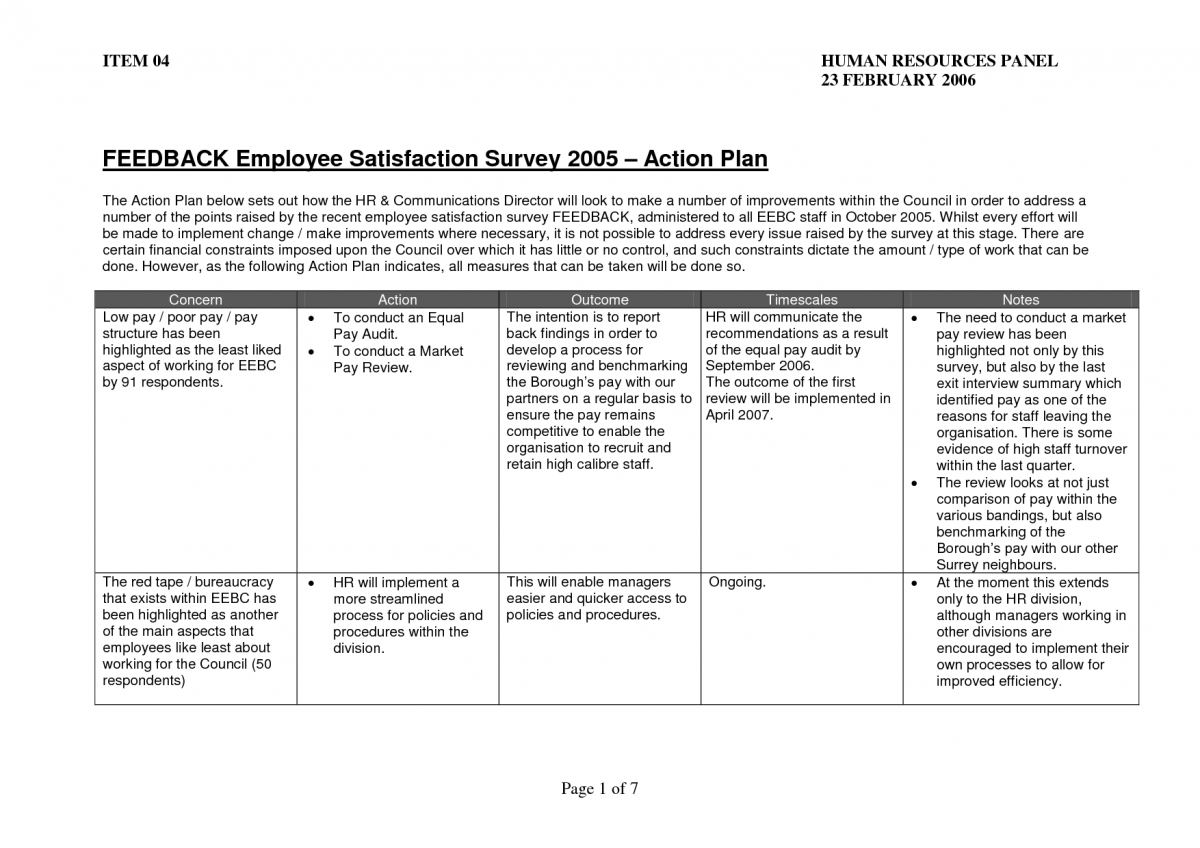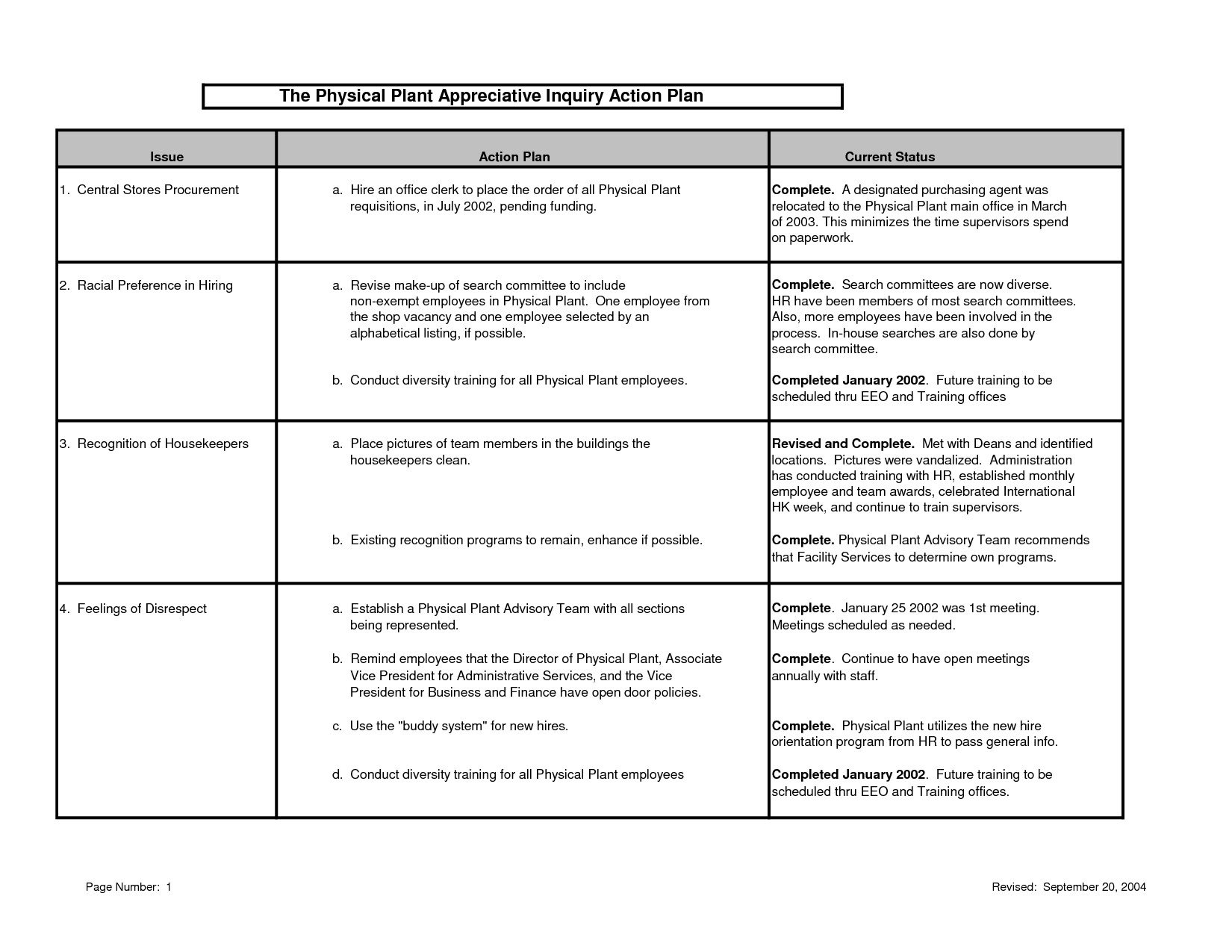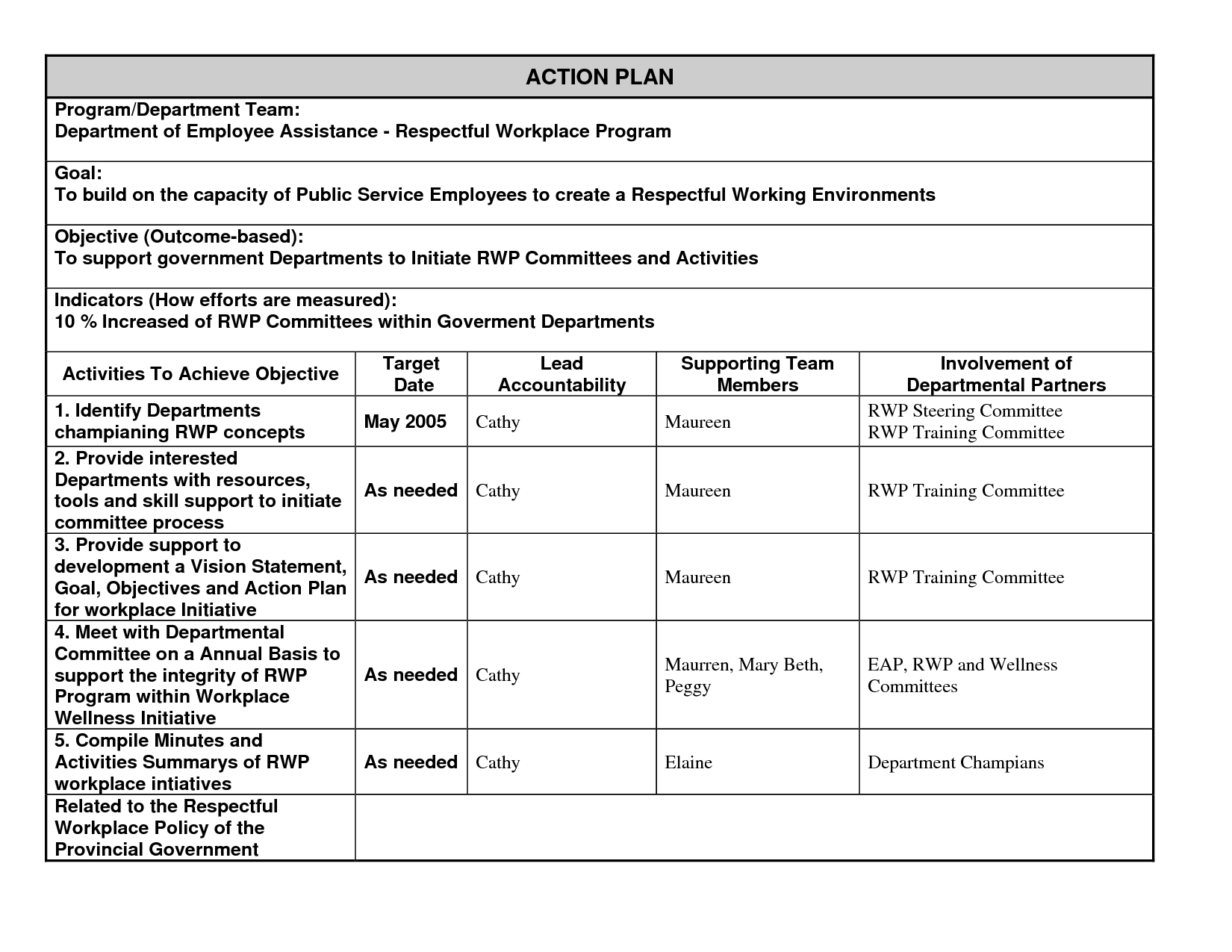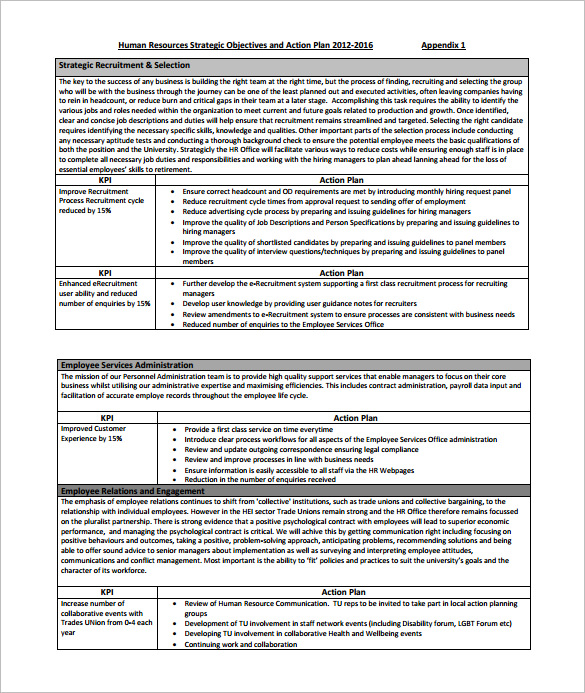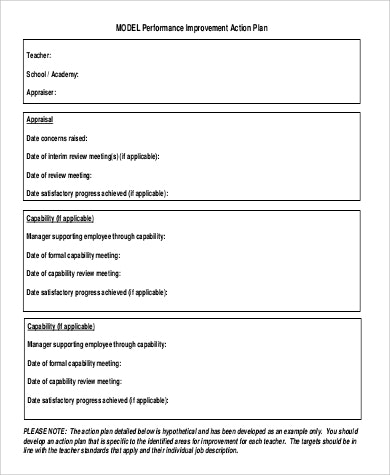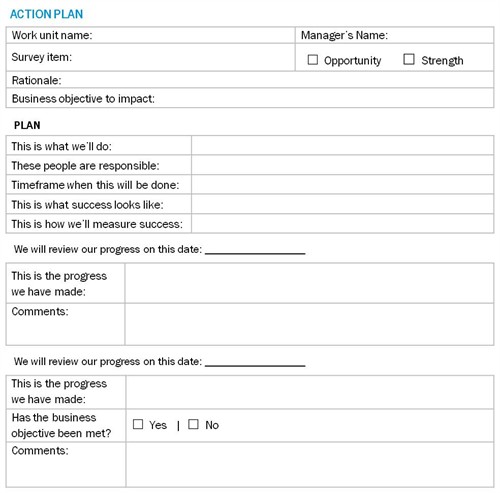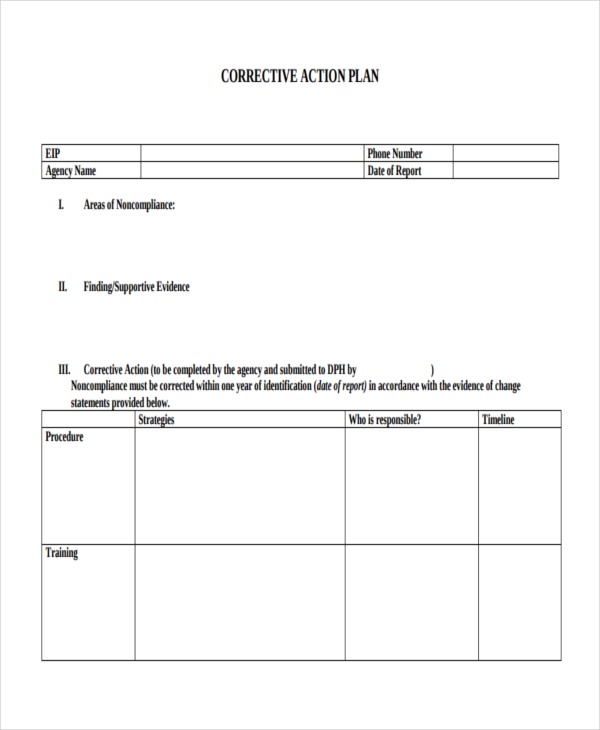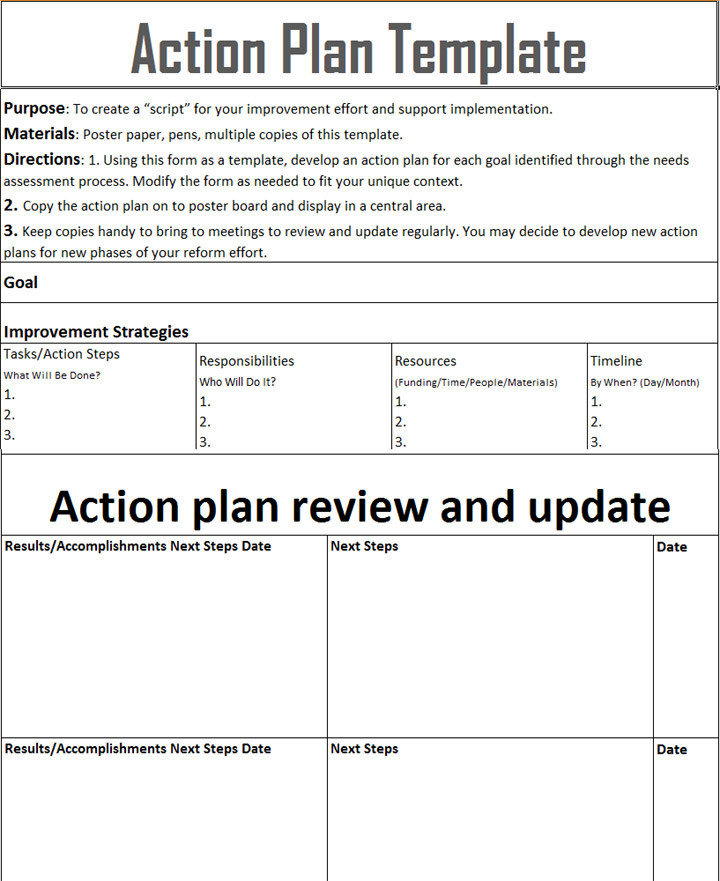23+ Employee Action Plan Examples to Download
When an employee is struggling with his productivity and performance, an employee action plan is usually rolled out and given to the said employee. Also called a performance improvement plan (PIP), an employee action plan assists the employee in meeting the company’s work standards.
Human resource personnel usually are the ones in charge of creating an employee action plan. If you are in HR or simply tasked by your management to create an employee action plan, here are some examples to assist you.
Employee Action Plan Template
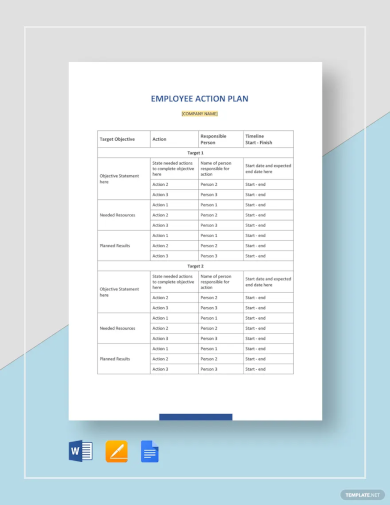
New Employee Action Plan Template
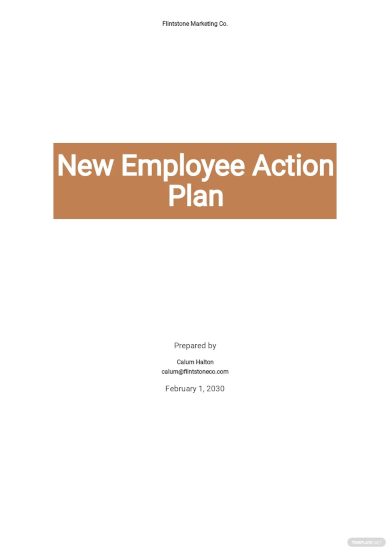
Free Sample Employee Action Plan Template
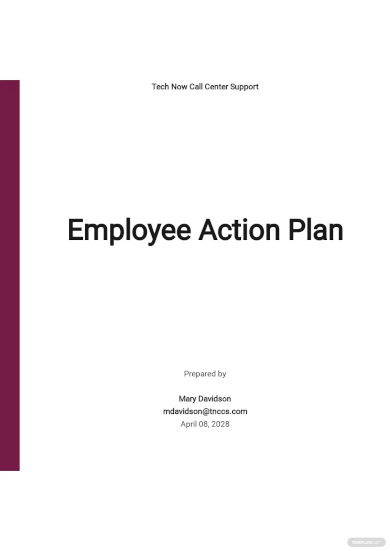
Employee Training Action Plan Template
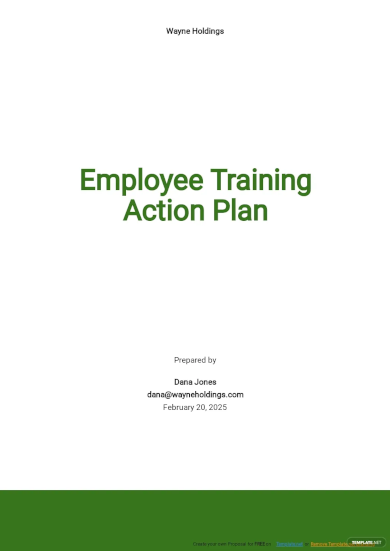
Employee Survey Action Plan Template
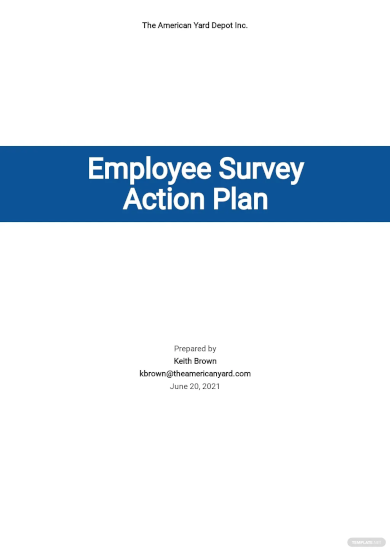
Employee Performance Action Plan Template
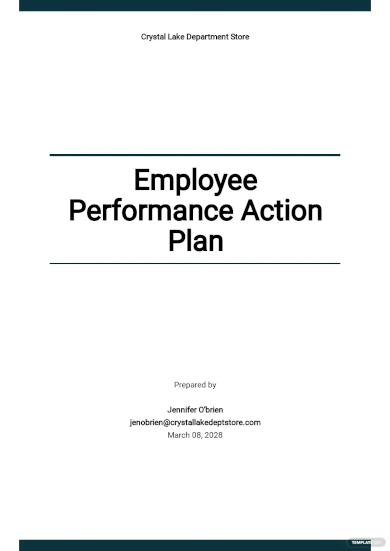
Employee Emergency Action Plan Template
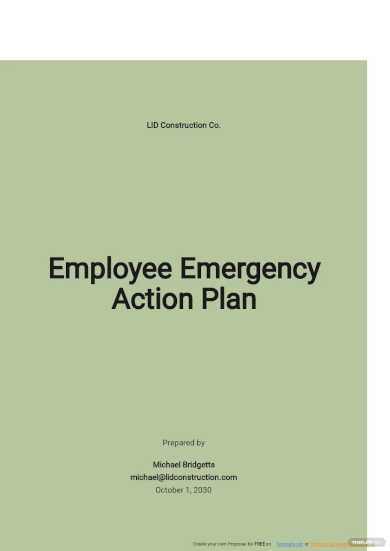
Employee Improvement Action Plan Template
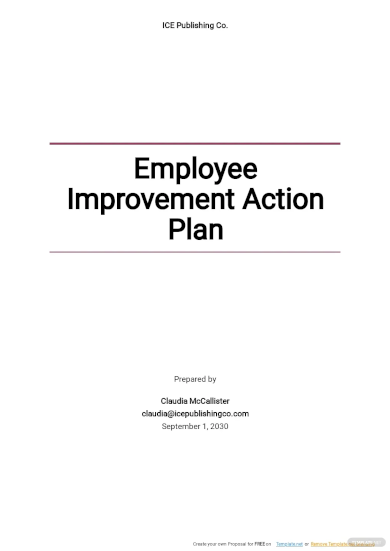
Employee Satisfaction Action Plan Template
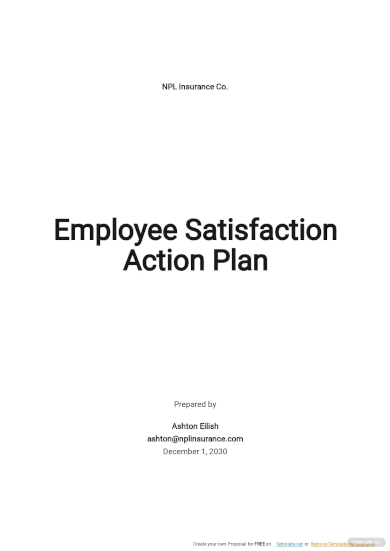
Employee Development Action Plan Template
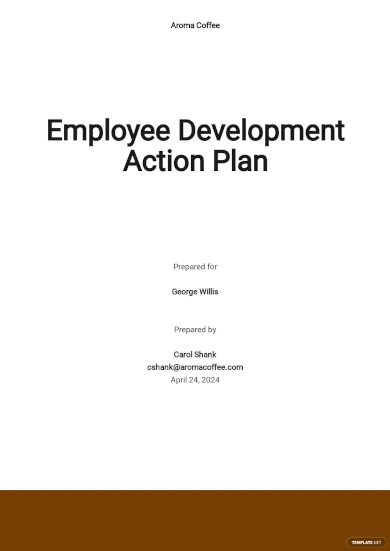
Employee Engagement Action Plan Template
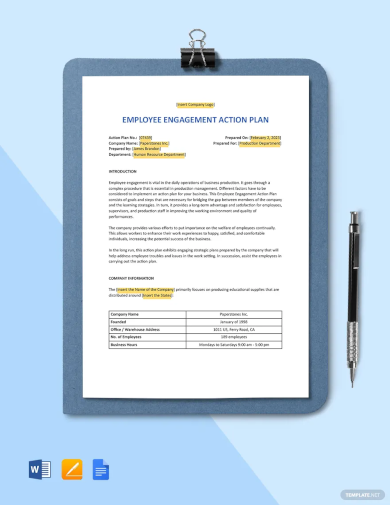
Employee Corrective Action Plan Template
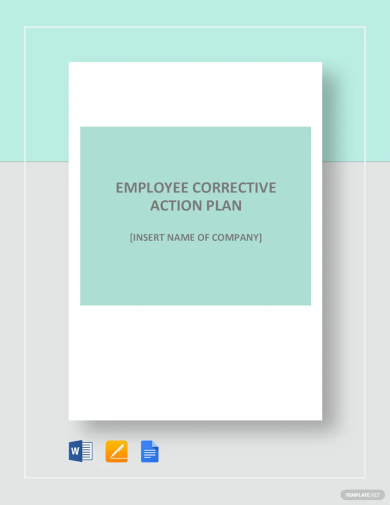
Employee Engagement Action Work Plan Template
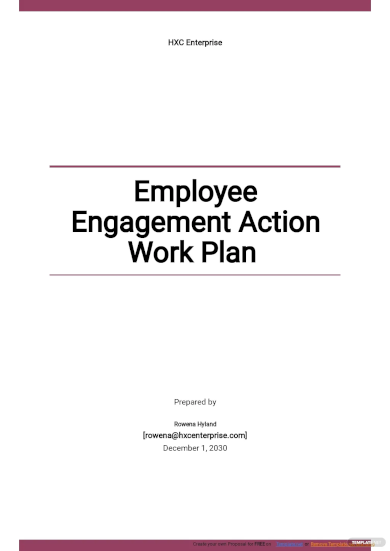
Employee 30 Day Action Plan Template
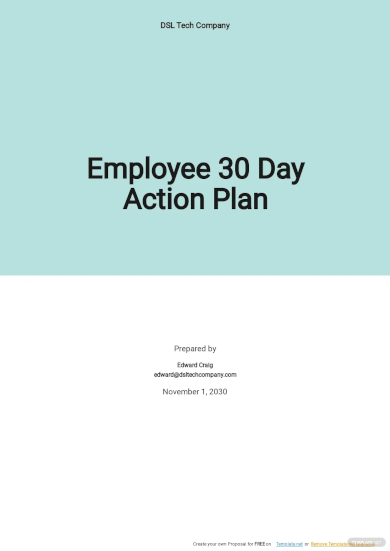
Employee Action Plan Example
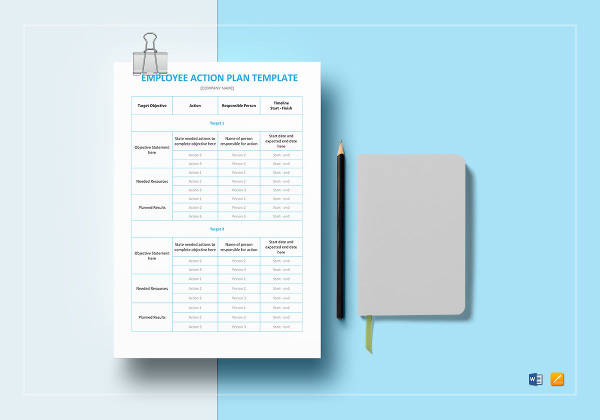
2005 Survey Employee Action Plan Example
Employee Performance Improvement Plan Example
How to Write an Employee Action Plan
Employee action plans are rather easy to create, but it needs to produce results as the employee’s tenure with the company is on the line. As previously mentioned, employee action plans assist the employee in meeting the company’s work standards. Other companies call it a performance improvement plan (PIP) but it serves the same purpose.
Employees who are struggling with their work responsibilities, either for new employees or a tenured employees whose performance have dropped significantly, are given an employee action plan to improve their performance. If they do not improve within the time frame given in the action plan, they will unfortunately be laid off by the company. You may also see business action plan examples.
If you are creating an employee action plan for your own company, listed below are some important tips to follow. We have also attached some examples for you to use as a guide.
1. Indicate the issues of the employee
Employees undergo an employee action plan because they are having problems regarding their performance. In contrast, top-performing and consistent employees do not need to be given an employee action plan or a memo to improve their performance. To start off the employee action plan, you being the human resource personnel should list down all the issues the employee is experiencing. Remember to only list down performance-related issues and not personal issues or grudges you have with the employee.
Indicating and specifying the issues will help you and the employee identify solutions on how the employee will improve his performance. Listing down general or vague issues will not be of help at all and will only cause confusion for both parties.
Here are some examples of listing down employee issue(s) in a employee action plan:
Example 1
Wrong: The employee is always late.
Correct: For the past month, the employee has been late to work for a total of 15 working days (out of a total 20 working days for the month). The office opens at 8:00 a.m. but the average punch-in time of the employee for the past month was listed at 8:10 a.m. You may also like work action plan examples.
Example 2
Wrong: The employee has not met the performance quota.
Correct: For the past three months, the employee has only averaged 45% from the required 80% monthly performance quota. The past three months has seen the employee’s performance drop significantly, in which the employee finished with 82% production in July, 34% in August, and 40% in September. The company only allows three months (in succession or cumulative) before the employee will undergo an employee action plan. You might be interested in employee corrective action plan examples.
2. List down possible solutions
An employee action plan is never complete without solutions or alternatives being listed down or enumerated. It would basically just become a document citing the mistakes of the employee. The solutions you will be listing down will be the basis on how the employee will improve his performance. It will also be easier for the employee as he already has the blueprint to follow. You may also check out sales action plan examples.
Most of the time, the HR personnel or manager is not knowledgeable on all employee tasks. That is why they collaborate with the employee’s immediate supervisor or manager to create the solutions in the employee action plan. Sometimes, it is just the manager who lists down the solutions and he just passes the information to the HR manager. You may also like career action plan examples.
Similar on how to cite the employee’s issues, providing solutions in the employee action plan should also be specific to avoid confusion for both the HR personnel and employee involved.
The examples listed below are a continuation of the previous examples.
Example 1
Wrong: The employee’s salary will be deducted.
Correct: As listed in the Employee Code of Conduct, any employee regardless of position or designation will have a salary deduction if he is has accumulated a total of five tardy or absences.
The deduction will only apply if the employee failed to inform his immediate supervisor or manager at least an hour before the office opens at 8:00 a.m. After the 5th tardy or absence, each tardy will have a deduction of $1 per minute until the employee arrives and punches in the bio metrics. You may also see teacher action plan examples.
Example 2
Wrong: The employee will only need to average 70% of the required quota per month for the next two months.
Correct: Before the employee will resume his work, he will need to undergo a comprehensive review of the company’s customer service protocols and techniques for two days with his immediate supervisor.
After the said training, he will resume his field work responsibilities for only 16 days for the next two months (two days field work per week instead of three days field work per week for the rest of the sales team). The remaining three work days will be for office work with the employee conducting at least 20 client calls per day. You may also like research action plan examples.
If the employee has achieved 100% of the required quota on the first month of the employee action plan, he will no longer be placed under probation or continue with the action plan on the second month. In contrast, if the employee failed to meet the required 70% requirement for the duration of two months, he will be dismissed from the company and will not be allowed to apply for the company again for the next six months. You may also check out strategic action plan examples.
3. Set a time frame
With the issues and possible solutions being listed down, the time frame or time period is the only thing that needs to be added to make the employee action plan complete. The time frame in which the employee will accomplish and meet all the conditions of the employee action plan will depend on the HR manager and the employee’s immediate supervisor.
As stated in the previous example where the employee is only given two months to improve his performance, a specific time frame should be indicated. On the employee’s side, the time frame will determine if he wants to continue working for the company or not. On the employer’s side, the time frame will determine if they continue to put their trust in the employee or create a job vacancy to replace the said employee. If you want to know more, you might be interested to learn what an action plan is.
4. Have a separate copy for documentation
It is highly suggested that every company should have separate copies of all their files, either hard copies or digital ones saved in the cloud. This ensures that if internal complaints or external issues arise, the documents can be easily presented. Transparency is important in every business entity or organization, and it is a punishable offence in any county if companies fail to be transparent to the general public of their business documents (operation permits, financial reports, non-disclosure agreements, etc.).
Physical Plant Employee Action Plan Example
Basic Employee Action Plan Example
2012–2016 Employee Action Plan Example
Employee Model Action Plan Example
How to Resolve (or Avoid) Employee Performance Issues
Listed below are some methods to resolve employee performance issues (or avoid them entirely). Some issues can definitely project a negative image to the company to various stakeholders, most importantly the company’s clients and customers, so the company’s employees need to consistently to perform at a high rate to avoid these issues. You may also see quality plan examples & samples.
1. Give out incentives
This is probably the easiest and most popular method on how companies resolve (or avoid) employee performance issues. Employees who work toward receiving bonuses or incentives are usually productive employees, but for struggling employees, the HR manager needs to convince them to work toward receiving incentives so that their performance will not only improve but they will also be receiving rewards. You may also like advertising plan examples & samples.
2. Encourage open forums or discussions
Open forums or discussions are very helpful for companies, unfortunately they are not conducted often. Open forums encourage employees to speak up and voice their concerns.
Additionally, employees who are timid and are afraid of airing out their issues will be encouraged to speak up especially if there are other employees who share the same concerns as they do. Sometimes, if employees voice their concerns beforehand and HR together with management will take action on it, employees will no longer have to undergo an improvement or action plan. You may also check out sales plan examples.
3. Check company policy
If there are general policies that are too difficult for majority of the employees to implement in their daily work, then the HR manager together with the management should take a close look at the company policies. If more than half of the company’s employees undergo an action or improvement plan, then the policies should be definitely reviewed. The company will be shooting itself in the foot if it does not lay out clear policies while subjecting employees to questionable penalties.
4. Allow transparency
Transparency enables both management and employees to have a better working relationship. There are situations in companies where employees fail in accomplishing tasks yet their superior does not inform them of their mistakes. Employees would certainly feel agitated and confused if managers would reprimand them immediately without knowing the reason why they were being reprimanded or scolded. You may also see event plan examples & samples.
Transparency also allows employees to have better communication with their superiors, especially if they will be subject to an employee action plan or performance improvement plan.



